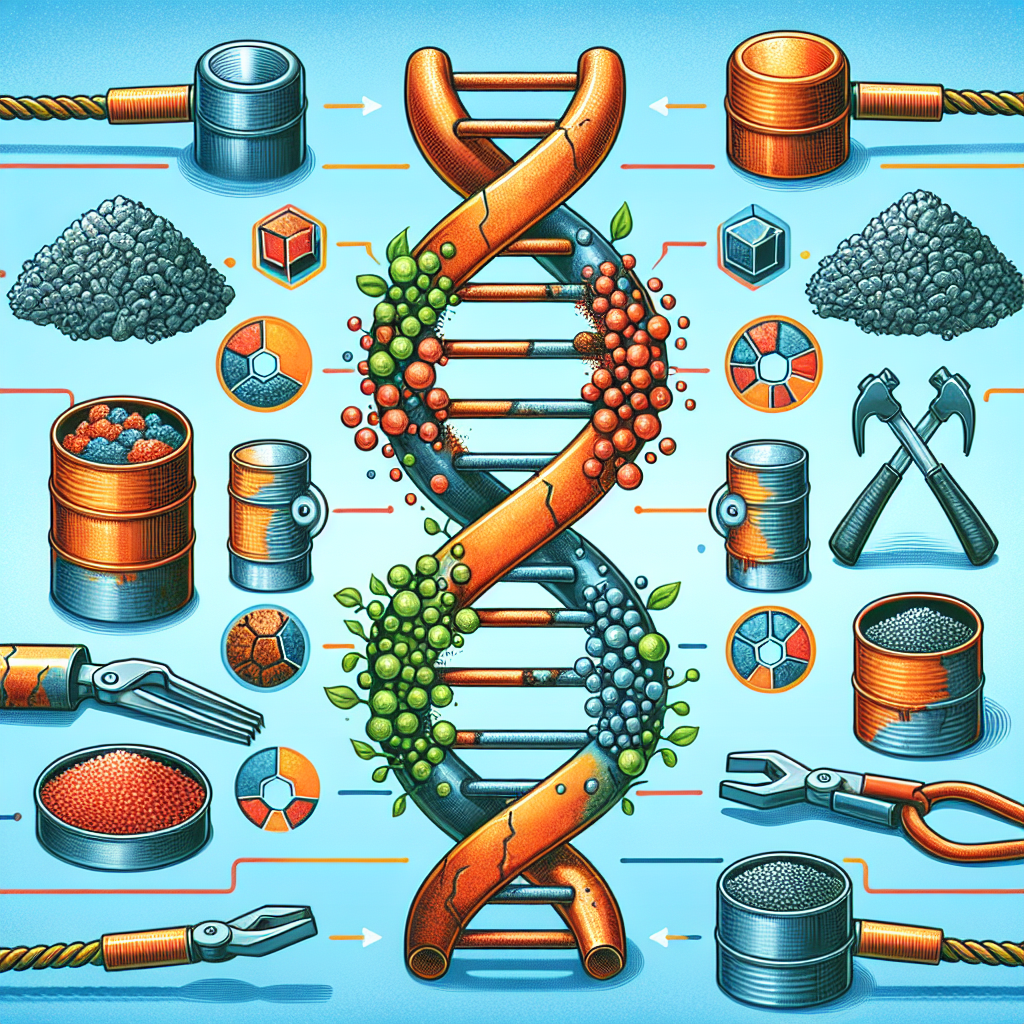How Crucial Are Heavy Metals in Damaging DNA?

Heavy metals like mercury (Hg), lead (Pb), cadmium (Cd), and arsenic (As) are highly toxic and can significantly damage DNA. Their effects range from direct DNA binding to oxidative stress and epigenetic modifications, all of which contribute to genetic instability.
Step-by-Step Breakdown of Heavy Metal DNA Damage
Step 1: Heavy Metal Exposure & Cellular Entry
• Heavy metals enter the body through food, water, air, or industrial exposure.
• They penetrate cells via passive diffusion or active transport, mimicking essential metals like calcium (Ca²⁺) or zinc (Zn²⁺).
• Once inside, they disrupt cellular homeostasis, affecting DNA directly and indirectly.
Step 2: Direct DNA Binding & Structural Disruption
• Some heavy metals directly bind to DNA, altering its shape and function.
• Mercury (Hg²⁺), lead (Pb²⁺), and cadmium (Cd²⁺) can replace essential elements like magnesium (Mg²⁺), which stabilizes DNA.
• This weakens DNA structure, making it prone to mutations and strand breaks.
Quantum Physics Connection
• Heavy metals distort the quantum wavefunctions of DNA base pairs, affecting hydrogen bonding between nucleotides.
• Quantum decoherence occurs, disrupting electron flow and weakening DNA’s electromagnetic stability.
• This loss of coherence affects DNA repair enzyme recognition, making it harder to correct damage.
Step 3: Indirect DNA Damage via Oxidative Stress
Heavy metals trigger the formation of reactive oxygen species (ROS), such as:
- Superoxide anion (O₂⁻)
- Hydrogen peroxide (H₂O₂)
- Hydroxyl radical (OH•)
- These ROS molecules steal electrons from DNA, leading to single-strand and double-strand breaks (DSBs).
- Guanine (G) bases are highly susceptible, leading to mutagenic lesions like 8-oxo-guanine, which causes mispairing during DNA replication.
Quantum Physics Connection
• Electron transfer reactions in DNA involve quantum tunneling, where electrons “jump” across base pairs.
• ROS molecules disrupt this tunneling process, increasing the probability of errors in DNA replication.
• The uncertainty principle in quantum mechanics suggests that these high-energy disruptions can alter electron positioning, further increasing mutation rates.
Step 4: Disrupting DNA Repair Mechanisms
• Cells rely on DNA repair enzymes like DNA polymerase, ligase, and base excision repair (BER) proteins.
• Heavy metals inhibit these enzymes by displacing essential zinc (Zn²⁺) and magnesium (Mg²⁺) ions needed for repair.
• Lead (Pb²⁺) blocks DNA repair pathways, leading to accumulated genetic mutations.
Quantum Physics Connection
• Heavy metals interfere with biophotonic signaling, which governs cell communication.
• DNA emits ultra-weak photons (biophotons) that help coordinate repair mechanisms.
• Quantum-level disruptions reduce photon emission, causing inefficient DNA repair.
Step 5: Epigenetic Modifications & Cancer Development
• Even without direct mutations, heavy metals alter gene expression through epigenetic changes:
• DNA methylation: Heavy metals cause hypermethylation in tumor suppressor genes (e.g., p53), silencing them.
• Histone modifications: Heavy metals disrupt chromatin structure, leading to misregulated gene expression.
• MicroRNA (miRNA) dysregulation: These small RNAs, crucial for gene control, are altered by heavy metals, increasing cancer risk.
Quantum Physics Connection
• Epigenetic changes involve quantum vibrations in DNA molecules, which regulate how genes switch on and off.
• Heavy metals introduce quantum noise, disturbing these delicate frequency patterns.
• This loss of coherence affects gene transcription fidelity, leading to permanent changes in gene expression.
Conclusion: Why Are Heavy Metals So Crucial in DNA Damage?
1. Direct Binding: Heavy metals replace essential ions, weakening DNA structure.
2. Oxidative Stress: ROS formation steals electrons, causing breaks and mutations.
3. Enzyme Inhibition: Heavy metals block repair mechanisms, increasing error rates.
4. Quantum-Level Distortions: Heavy metals interfere with DNA’s electromagnetic stability and quantum coherence, making repair inefficient.
5. Epigenetic Disruptions: Heavy metals alter gene expression without changing the DNA sequence, leading to long-term health consequences.
Final Thought:
From a quantum physics perspective, DNA damage by heavy metals is not just a chemical process but an electromagnetic and quantum event. The interference in electron tunneling, biophoton emissions, and quantum coherence makes heavy metal toxicity a profound threat to genetic integrity.

Leave a Reply